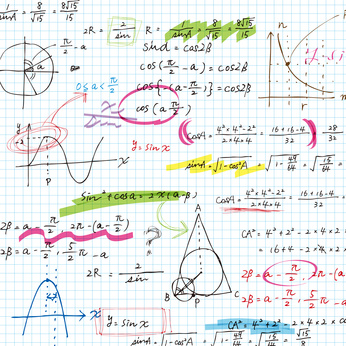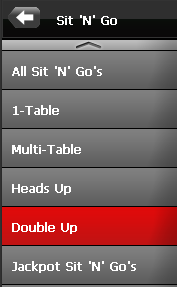The Impact Of ICM, Both Early Game And On The Bubble For DoN SNGs
By Rich "Drarr' Hunt
Double or Nothing SNGs are great games to find fishy players. In their minds DoNs pay out half the field so there is a great chance of cashing and less risk to a new deposit. This seems ideal for a new player to test his poker skills online. Unfortunately for them there is a major difference between DoNs and the home games they have been playing. This difference is shown when you apply ICM to the game.
In this breakdown of how to understand the ICM in DoNs, I first look at the differences between a Double-or-Nothing and a regular SNG in terms of prize pool distribution. Then going through a DoN SNG I look at the impact of ICM in the early levels. Finally I discuss bubble considerations with big and small stacks and the limitations ICM puts on your decisions at this critical stage of a SNG.
This article assumes familiarity with both the Independent Chip Model and the Basics Of Double Or Nothing Sit N Go Strategy – check out those two links first if you are not yet familiar with those concepts.
Planet Mark’s Rec: The Easiest Sit and Goes Online are Over at America’s Cardroom!
You can use them to grow a bankroll, qualify for online tournaments, or even to help you win a seat in the World Series.
Instead of tables full of ‘regulars’ who know the math, bubble strategy and hand ranges, ACR Poker is recreational. Compare the fields to the bigger sites, and you will quickly see how soft they are for yourself.
You can get your bankroll off to a flying start with a 100% matched bonus using referral code: SNGPLANET
Check out the latest promos and tournament events for yourself now, over at www.americascardroom.eu!
ICM In DoN SNGs – Differences Between Double-Up and Regular SNGs
Independent Chip Modelling (ICM) allows you to determine how much the chips in your stack are worth – in terms of your average winnings if the same game situation occurred 1000’s of times – at any point in the game.
This value is determined by the stacks all the players, and the distribution of the prize pool.
In a regular Sit N Go, prizes are paid out to the top 3 in a 50% / 30% / 20% format. With 4 players left with equal stacks in a $10 game (all else being equal) you’ll win $25 each time.
In a Double-or-Nothing Sit N Go, the most you can win is $20 at the $10 buy-in level, when there are 6 players left with equal stacks, the average win (again, assuming everything else is somehow equal) is $16.67.
Say someone goes all-in at that bubble and you are the only player left to act.
You have a good hand and want to decide whether to call. ICM can show you the risk and reward here by looking at the long term effect on how much equity you will have in the prize pool.
Here are the possibilities:
- If you fold you’ll keep $16.67 and the next hand will start
- If you call and win you’ll get $20, the maximum prize and the game will end
- If you call and lose you’ll forfeit your $16.67 and the game will end.
Notice something unbalanced here, you are risking $16.67c to win $3.33c more – that is to say that your risk is 5 times bigger than your reward!
The Key Point Is This: You do not need a ‘better hand’ you need a hand which is so much better than your opponent’s possible all-in hands, that it compensates for this 5-to-1 risk / reward disparity.
This leads to some questions:
- How Do I Know What These Hands Are? You’ll need some software to help you work out the math, these are called ICM Calculators and several are commercially available.
- How Does This Affect My Strategy? In a HUGE way, your strategy is affected right through the game, and the risk-vs-reward disparity grows as the bubble gets closer. The rest of this article explains the effects at different stages of the game.
- Will My Opponents Know About This? Yes, some of them at least. As you move up from the micro-limits, more and more players will be playing a ‘good’ mathematical strategy, it is up to you to spot who is not playing with ICM in mind, and adjust your own play to exploit their mistakes (this is easy to do, and is very profitable).
If you are serious about becoming an expert in this format, then a Heads-Up-Display tool will show you who the fish and good regulars are very quickly. You can find out a little more and find 3 different sites which offer you these tools for free in this article.
Applying ICM In Game – Early Stages Of DoNs
 The 5-to-1 needed to call at the bubble works while there are 6 players in the game, when there are 10 at the start, the math looks different. This still has a big effect on your strategy though.
The 5-to-1 needed to call at the bubble works while there are 6 players in the game, when there are 10 at the start, the math looks different. This still has a big effect on your strategy though.
Doing the calculations will show you that doubling your stack first hand will give you and average long term equity of $15 in a $10 game. That puts your risk / reward ratio at 2-to-1. The remaining $5 in equity is distributed among the players not in the hand. This makes intuitive sense as well as being backed up by the math. If you eliminate one player, then the others still in the game will win a little more on average if the game was played 1000’s of times, and you will cash more often, but not every time.
The biggest mistakes (mathematically speaking) in Double-or-Nothings will happen at the bubble, this is where your superior knowledge of the math and strategy considerations will make you profits. If you lose chips in the early stages then you are significantly hurting your chances at the bubble. Remember, the extra chips you win are worth only half the value of chips you lose.
Regular and profitable players are very tight in the early stages – and the reason is that they understand that their key objective is to get to the bubble with enough chips to have a little fold-equity.
Optimal early-game play is therefore even tighter than in a regular Sit N Go.
DoN Bubble Play – ICM on a DoN Bubble With A Big Stack
The impact of ICM value is always greatest on the bubble. No matter which format of SNG you play, you will either get paid here or exit with nothing. In DoN SNGs this is more intense the only pay-out you can get is the maximum pay-out. This means that survival is priority.
In a regular SNG, chip leaders can really extend their advantage by abusing shorter stacks and shoving on them in spots where they ‘cannot’ call. In a DoN there is comparatively little to gain from adding more chips when you already have a very big chip lead, as all the pay-outs are equal.
In certain situations with a large chip lead you’ll play cautiously compared with regular Sit N Goes, making sure you do not ‘swap stacks’ (double up a mid-stack, making yourself a mid-stack in the process) and put yourself in any danger. In other situations there will be a micro-stack or two – or maybe several mid to small stacked opponents who understand the math. You can play more aggressively here and make sure you keep the pressure on those players trying to outlast the micros. Should the micro stack make a comeback, the advantage is that other players should be already in the danger zone.
The case for folding is far stronger when facing a shove yourself, even in spots where you will still be left with a comfortable lead. I recommend asking yourself whether the player shoving understands the risk / reward ratio, and whether they might think you do too. Generally you’ll see monster hands when ‘good’ players shove through several people – and weaker hands 1-on-1 when they know that you are aware you can’t call without a strong hand yourself.
I recommend you work out profitable calling ranges against these ‘light’ all-ins between your sessions using an ICM calculator.
To summarize, when you have the chips - push the table when the stack-size situation is right – when it is not (or when you face aggression), then it is better to use your chips defensively and wait until someone busts… the upside is very small compared to your current equity.
DoN Bubble Play – ICM on a DoN Bubble With Medium And Short Stacks

Many times you will not be the large stack. If you are a medium stack ICM often just forces you to play a waiting game. You really cannot risk any chips until you can either shove a premium hand or become the short stack and have to play. The focus remains on pushing and not calling – remember you need at least 2-to-1 on your call at the bubble, and often more, so simply ‘beating your opponents range is an unprofitable move’.
If you are a short stack you are at considerable risk – with the rest of the table waiting for you to bust. Do not be afraid of open-shoving a reasonable hand when the table is playing cautiously. If you think your raise will not get through or if others are playing loose and are taking each other on, then you can afford to wait and hope that others bust for you. The one thing you should not be doing until you are absolutely desperate is calling someone else’s shove.
I recommend you test some scenarios on your ICM calculator (SNG Wiz for example) and see how adding more players or different stack sizes affects the range of hands you can shove with. Remember to give players who understand the ICM a default tighter calling range and people who do not a much wider range.
You’ll see a lot of mini and small raising in these games. It can feel ‘wrong’ folding to these, though I suggest you do that a large proportion of the time. Here is how I rate the options:
- Folding: My number one, feels ‘weak’ and saves a lot of trouble… you can steal someone else’s blinds instead.
- Calling: Horrible under most circumstances, can work if you have a monster and intend to call your opponent’s c-bet and build a pot from there. That trick only works once, as a lot of people will take a note!
- Re-stealing: My number 2 pick, especially against a button raise or BVB. Works a treat against serial mini-raisers, just make sure you do not overdo it… again observant opponents will note that you like this play and will min-raise you to induce.
DoN SNGs – Bringing It All Together
You can only win 2x the buy-in in a DoN SNG, meaning it has the flattest pay-out structure of all 1-table tournaments. As a result when you win chips the ICM calculated $ value of your stack increases by far less than it will in other SNGs. This, combined with the fact that opponents make a lot of mistakes at the bubble, mean you stay much tighter in the early stages than you would in a regular Sit N Go.
This is strongly highlighted with the ICM considerations on the bubble, where you either hit your maximum pay-out or leave with nothing. Unlike in a regular SNG where big stacks often bully the bubble, there is no advantage to gain here by acquiring more chips and survival becomes key. Among the lower stacks it becomes a waiting game, with everyone hoping someone else bust first. This means that in what appears to be a potential steal spots or with a moderate hand, the short stack should be folding instead of shoving.
Remember many fishy players will not view the game like this. Through their lack of knowledge you will find some calling incorrectly and making bad plays. Be sure to note this and adjust accordingly so you avoid making the mistake of thinking they should be playing correctly. Always remember it is these bad plays that make you money in the long run.
Planet Mark’s Rec: The Easiest Sit and Goes Online are Over at America’s Cardroom!
You can use them to grow a bankroll, qualify for online tournaments, or even to help you win a seat in the World Series.
Instead of tables full of ‘regulars’ who know the math, bubble strategy and hand ranges, ACR Poker is recreational. Compare the fields to the bigger sites, and you will quickly see how soft they are for yourself.
You can get your bankroll off to a flying start with a 100% matched bonus using referral code: SNGPLANET
Check out the latest promos and tournament events for yourself now, over at www.americascardroom.eu!
More Great Sit N Go Strategy Articles:
-
Planet Mark's SNG Course Preview Page (4-part course, shows you how to beat standard format Sit N Goes)
-
Best Site For Double Or Nothing Sit N Goes (compares all the major site's fees and summarizes what to expect at each one)
-
Sit N Goes For US Players (examines the Sit N Go Tournaments at the biggest and best offshore poker sites)
-
<< Back To The Sit N Go Main Page For Many More Articles



